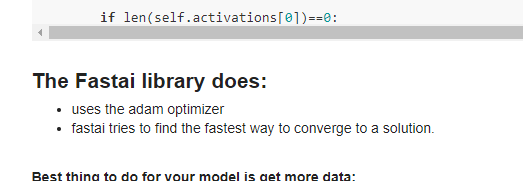I remember Jeremy mentioning it, haven’t analyzed the code. (beginner in Python, really limited  )
)
The comment about Adam being used is also in the lesson2 lecture notes here, (but could be a mistake).

I remember Jeremy mentioning it, haven’t analyzed the code. (beginner in Python, really limited  )
)
The comment about Adam being used is also in the lesson2 lecture notes here, (but could be a mistake).
